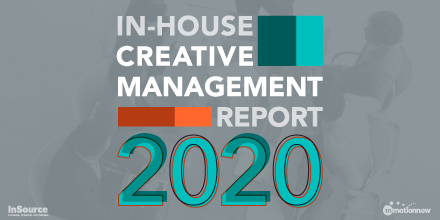“Don’t be a boss, be a coach” is one of the best pieces of advice I ever received about managing people. I took that advice to heart when I was leading in-house teams, and it has always paid off in regards to loyalty, team cohesiveness, and performance. I’ve got proof to show it too in my 360 reviews, upward feedback, and enterprise-wide client satisfaction surveys (tools that I’m sure only in-house leaders have even heard of, let alone been lucky enough to take part of).
I have worked with many creatives who have no desire to lead teams and plenty who do want that responsibility but don’t realize that being “The Boss” requires more than just having experience as a practitioner at your craft. Being the boss means balancing the fine line between representing the best interests of the organization, and getting the best performance from your people. It is about knowing the difference between managing and leading (you manage information, budgets, and systems, you lead people). As any people-manager knows; leading people is not easy. Leading creative people can be like herding kittens chasing butterflies on a windy day.
Be happy when they leave.
One of the great things about in-house creative teams is the longevity and relatively low attrition rates of staff, compared to agencies. The benefit of having people around that have a long memory of what campaigns ran when, or what collateral printed and when, is immeasurable. And it always seems that just when you’re team was finally getting to the “performing” stage that Bruce Tuckman described in his forming–storming–norming–performing model of group development… one of your top people decides to leave.
Staff turnover can be a problem for some managers, but not me. I’ve had good creatives leave, and I’m OK with that. It means they have grown as a professional while working on my team, and have skills another employer needs or that they can use to do something else like go out on their own. After all, part of my job was to help them learn and grow and stretch some new muscles. Personal and professional development will keep people interested in their work of course, but it also provides them with the necessary skills and experience to move up – or to move on.
See the opportunity for what it’s worth.
When someone moves on, you as a leader now have a great opportunity ahead of you. You can bring in someone who has the skills that are needed to balance out current needs of your workflow. You could promote a junior person to a senior role, and then hire for the junior position. And then train both people in any skills lacking to get the job done.
You could also evaluate your department processes, and change things in a way that will best serve the organization. For example; maybe you need more project management expertise because you are outsourcing so much overflow work. You also need to keep headcount flat, so instead of hiring for the same creative role that was vacated you instead develop a new position and hire for that role.
Learning vs. Training.
Coaching is about developing people to perform at their best, and there are two ways as a department leader that you can do this for yourself and others; training and learning.
Training activities are instructor/facilitator-led classes, seminars, and conferences where there is a specific learning objective or outcome. In other words, a course on HOW U, going to HOW Design Live, or taking a class with a live instructor is all training. If you don’t have a budget set aside for training, then you should consider some learning activities that will help you develop your staff.
Learning activities do not have an instructor or specific learning objective per se. But the outcome can still be as valuable. For example; have a junior designer shadow a senior designer on a press check to learn how to do it. You could also give someone a project they have never tried before, but they would enjoy working on something new. At the end of the project, they’ll have a new bonafide skill and demonstrated experience that you’ll benefit from by being able to say your department can do that kind of work.
So if you want your team to say “I’ve got a great boss,” then make sure you’ve got these developmental activities in your managerial and leadership toolbox. Take it from me; your staff will thank you for it.
How A Consulting Mindset Will Take Your Department From Order-Takers To Creative Problem-Solving Rock-Stars!
I've written about some lessons learned while working in-house that made me a better consultant and business owner. Now, I'm turning the tables and following up with some ideas for what I think helped shape my success when I was an in-house, corporate, creative. I...





